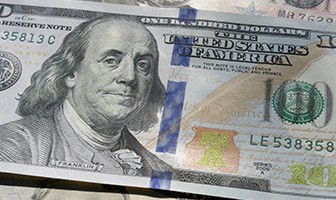Markets are abuzz with rumours President Donald Trump will order the US Treasury to intervene in foreign exchange markets to weaken the dollar.
Intervention is presently unjustified by macroeconomic and market conditions. A deliberate effort to weaken the dollar could cause global financial turmoil. It would represent a mistaken approach to addressing global and US external imbalances.
On neither economic nor operational grounds is there a good case for intervention. There are scant signs of disorderly conditions which might provide justification. Currency volatility measures are low.
Intervention decisions in practice are motivated not just by excessive exchange rate volatility, but also by misalignments. But there is little evidence of serious currency misalignments, taking into account International Monetary Fund assessments, Bank for International Settlements real exchange rate indices and other data.
Disorderliness is often conflated with authorities’ dissatisfaction with exchange rate levels. Most economists agree that, when misalignments are present, action to correct underlying fundamentals is the proper means of redress, not intervention. Intervention without accompanying changes in fundamentals has limited impact.
The best way durably to address concerns about currency valuations would be through fundamental action. The US should tackle its longer-term fiscal challenges. European countries with ‘fiscal space’ should use it, while the euro area should move forward with developing a centralised fiscal capacity, restoring banks to health and improving its dynamism. China should prudently use fiscal stimulus – and so on. Ending trade wars would also help strengthen foreign currencies. Don’t hold your breath on any of this.
In the past 25 years, US thinking on intervention focused almost exclusively on disorderly conditions and paid far less attention to exchange rate levels. When the dollar depreciated sharply during the 2007-08 financial crisis, concerns arose about market instability, but no intervention was undertaken.
Japan often spoke out against yen appreciation, cloaking concern over export competitiveness in terms of volatility. However, in recent years, Japan has refrained from jawboning and intervention. While many European finance officials fret about a strengthening euro, European Central Bank views are similar to the traditional American stance. The Canadian dollar floats freely and Mexico eschews currency operations.
For intervention meaningfully to impact the trade-weighted dollar, the US would presumably need to operate in euro, yen, renminbi, Canadian dollars and/or Mexican pesos. Given that all generally float freely, the relevant authorities would be unlikely to go along with a US intervention operation. If the US intervened alone to weaken the dollar, markets would perceive that global authorities were at loggerheads. This would probably trigger destabilising volatility, spreading to bond and stock markets.
Most valuation metrics see the dollar as overvalued, and some in the Trump administration see the dollar as highly misaligned. The dollar’s firmness owes much to relative US outperformance v. other major economies, and is buttressed by ill-advised US deficit-raising fiscal policies.
Euro area economic performance is weak, inflation persistently undershoots, and yields are negative in many countries. Japan’s economy remains anaemic. China is still finding its footing amid last year’s deleveraging campaign and uncertainties generated by trade wars. Mexico faces weak oil prices and economic policy challenges. Canada is running current account deficits. In short, other currencies’ ‘undervaluation’ may reflect market forces and the flip side of dollar ‘overvaluation’.
For intervention to succeed, US authorities would need to consider tricky operational issues. In the two intervention operations of the past two decades, the Treasury and the Federal Reserve operated 50/50, in concert with the G7. Would the Fed partake in a solo US operation along with the Treasury? Fed non-participation could send a divisive signal to markets – exacerbating not reducing volatility.
In what currencies would the US operate? And in what scale? The Fed can print unlimited dollars. But the Treasury’s Exchange Stabilization Fund’s balance sheet totals just less than $100bn, with dollar holdings around $23bn. These dollar holdings might suffice to send a few warning shots, but they are not enough for a major campaign.
The ESF would need to sell dollars to buy foreign exchange. The euro/dollar market is deep and massive; Chinese authorities can exert tremendous control over the renminbi market. The ESF might seek to mobilise other parts of its balance sheet. But securing dollars for the Treasury or ESF so they could purchase foreign currency could be difficult, especially when the debt limit is being stretched.
The Trump administration has ramped up currency market aggression, constantly – and wrongly – pointing fingers at foreigners. But US external deficits – even if they are a problem – are largely ‘Made in America’. Intervention would be an unsound idea that could well worsen currency wars and global instability.
Mark Sobel is US Chairman of OMFIF.
